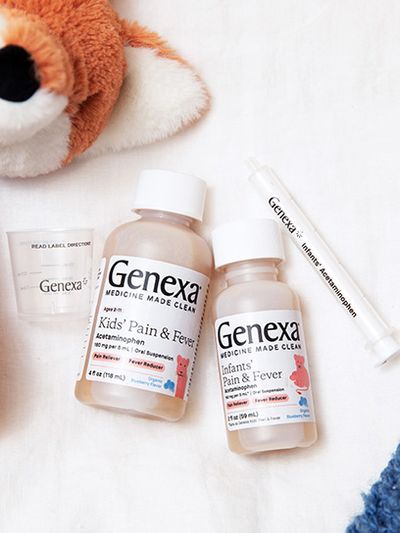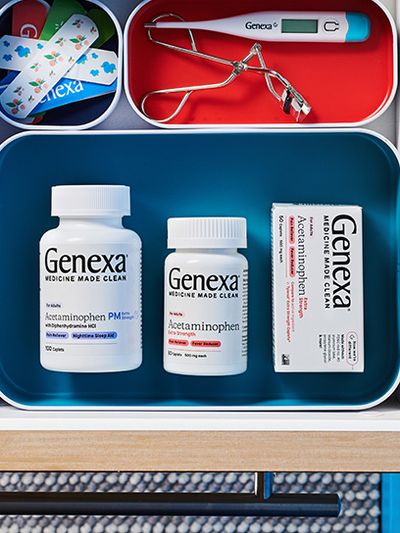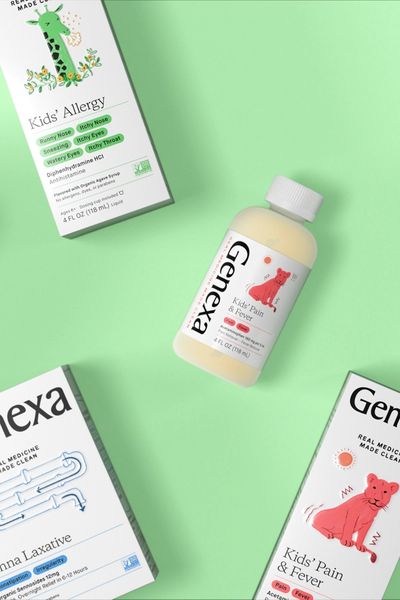Understanding Cold Medicine Ingredients
How To Protect Your Kids
Table of contents:
Over the counter cold medicine might seem safe since it can be purchased without a prescription, but there are potential side effects and dangers associated with giving cold medicine to your children, particularly when they are very young.
Children under the age of six are considered to be at the greatest risk of colds and are likely to experience numerous colds per year. Every parent wants to protect their kids, and the first step to doing so when they’re sick is to start understanding cold medicine ingredients.
While some active ingredients are safe for children in the right doses, others should be avoided. Here’s how to protect your kids.
What are the symptoms of a cold?
The common cold occurs as a result of a viral infection of the upper respiratory tract, which includes the nose and throat. There are many different types of viruses that can cause the cold, and symptoms typically last for anywhere from seven to ten days. Most children start to experience symptoms of the common cold within one to three days of being exposed to one of the viruses that causes the cold.
Everyone experiences symptoms of the common cold differently, but common symptoms typically include:
- Runny or stuffy nose
- Cough
- Congestion
- Slight body aches or a mild headache
- Generally feeling unwell (malaise)
- Sore throat
- Sneezing
- Low-grade fever
As your cold progresses, you may start to experience a thicker discharge from the nasal passages that can turn yellow or green. While many people think that a colored nasal discharge is indicative of a bacterial infection, this coloration is often part of the common cold.
What active ingredients are commonly found in cold medicine?
Depending on the symptoms that you are experiencing with your cold, your cold medication may contain one or more different active ingredients. Active ingredients found in major cold medicines primarily fall into five main categories: analgesics, decongestants, expectorants, antihistamines, and cough suppressants.
Combination medications typically include multiple active ingredients that are designed to treat several symptoms at once, such as a medication that contains both a pain reliever and a decongestant. Cold medications may come in a variety of different forms, including syrups, pills, sprays, powders, and capsules.
Analgesics are active ingredients that are used for pain relief and fever reduction, including acetaminophen, aspirin, ibuprofen, and naproxen sodium.
Decongestants are primarily used for the relief of nasal and chest congestion and include active ingredients like pseudoephedrine and phenylephrine. Decongestants often include medication that will make you more alert, so they usually are not taken at night. When using a nasal decongestant, you may find that your nasal passages become more clear and you are able to breathe more easily.
Expectorants are commonly used to help loosen and thin mucus in the bronchial passages, making it easier to cough up and expel the mucus. Guaifenesin is one of the most common expectorant ingredients.
Antihistamines are primarily used for the treatment of allergies but can also help relieve nasal congestion; common antihistamines include chlorpheniramine maleate, diphenhydramine, and doxylamine succinate.
Cough suppressants help to reduce the coughing reflex; dextromethorphan is the most common cough suppressant. Cough suppressants are typically used to control a persistent cough that is caused by an illness, but they should not be used to suppress a cough associated with smoking.
What risks are associated with the active ingredients in cold medicines?
Although most cold medicines are sold over the counter, even over the counter drugs can cause side effects in some patients. While most people will not experience side effects at all and an even smaller percentage will experience severe side effects, using cold medicine incorrectly or for an extended period of time can cause significant health issues in at-risk populations, including children, people over the age of 65, people with chronic health conditions, and people taking certain medications.
Despite the potential health implications,studies indicate that most people do not put much thought into choosing their cold medicine. Because most cold medicines are sold over the counter, many people mistakenly believe that there are no possible health consequences associated with their use.
A 2016 study examining the attitudes of the general population about cold medicine found that:
- 45 percent of patients do not consider which prescription medicines they are taking when choosing an over the counter cold medicine
- 58 percent of patients do not consider any existing health conditions they may have when choosing an over the counter cold medicine
- 65 percent of patients do not think about other over the counter drugs they are taking when choosing an over the counter cold medicine
- 73 percent of people over 60 years do not think about whether their chosen over the counter cold medicine is suitable for their age
- 20 percent do not believe that their prescription medications, existing health conditions, other over the counter drugs, or age are important considerations when choosing a cold medicine.
Failing to consider the factors listed above can put people at considerable risk, especially vulnerable populations like children and older adults. Even over the counter medications can cause drug interactions; people taking monoamine oxidase inhibitors (MAOIs) or selective serotonin uptake inhibitors (SSRIs) for depression may not be able to safely use some over the counter cold medications.
What are the dangers of giving cold medicine to children?
Parents should use caution when considering the use of cold medicine in children. Young children are susceptible to serious and potentially life-threatening side effects, including convulsions, rapid heart rates, and death.
The FDA states that children under the age of two should not be given any kind of cough and cold product that contains a decongestant or antihistamine due to the potential for serious or life threatening side effects to occur. Between 2004 and 2005, more than 1,500 children under the age of 2 were treated in emergency rooms for side effects caused by cold medications, including overdoses. As a result, cold and cough medicines for children under the age of two were voluntarily removed from shelves by the manufacturers.
Following the withdrawal of cough and cold medicines for children under the age of two, manufacturers also re-labeled their products to state that they should not be used in children under the age of four years old.
However, if your child’s doctor advises that you can safely give cold medicine to your young child, make sure that you follow their dosing instructions precisely. Children under the age of four should never be given dextromethorphan, a common ingredient in cough medications, and it should only be used under a doctor’s supervision until they reach the age of six.
When giving cold medicines to children over the age of four, it’s important to use caution. Despite the fact that most cold medicines are sold over the counter, they can still be harmful in children when not given properly.
If children are given more than the recommended amount of cold medicine or a specific active ingredient, are given the medication too frequently, or consume more than one product that contains the same active ingredient, they can experience dangerous side effects.
Regardless of your child’s age, they should not be given medications that are made and packaged for adults, even when given at a lower dose. It’s important to use medications made specifically for children and to make sure that you know your child’s current weight, as many children’s medications are given by weight rather than age.
While many over the counter cold medications can be used safely in children, some active ingredients are not safe for kids or should be used with caution. Many children’s medicines contain acetaminophen, which is safe in small amounts but can cause liver damage when given in larger quantities than recommended. Typically, this occurs when children are unintentionally given two medications that contain acetaminophen as an active ingredient, such as a pain killer and a cold medicine that uses acetaminophen as a fever reducer.
Summary
When it comes to understanding cold medicine ingredients, the best way to protect your kids is to ensure that you carefully read the label and are aware of the active ingredients and dosages found in the medication.
Cold and cough medicine should never be given to children under the age of two, and it is not recommended that children under the age of four take cough medicine without the supervision of a physician. Children over the age of four should only be given cold medicine in appropriate doses and parents should check to ensure that children never receive multiple medications with the same active ingredients in order to prevent an overdose.
Children should only be given medications that are formulated and packaged for kids and should never be given adult medication, even at a lower dose.






